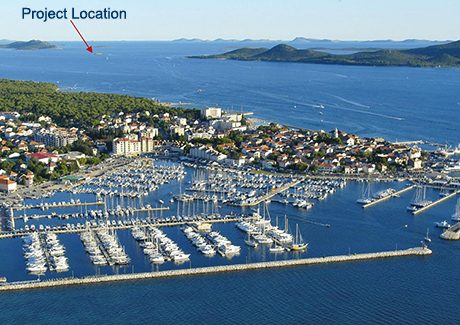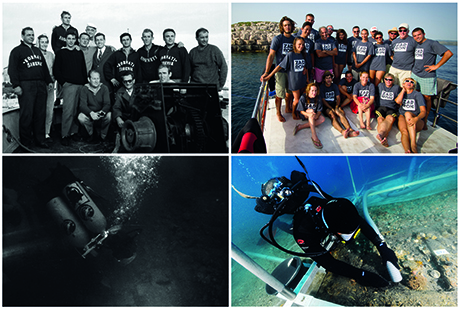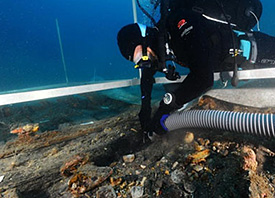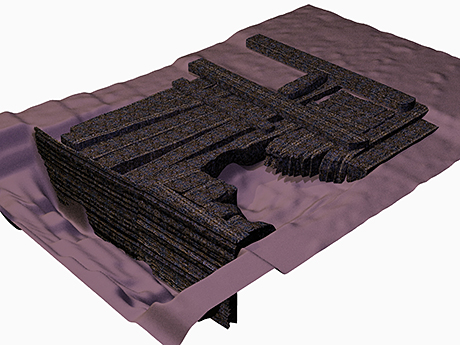
Project Introduction
13 June 2013
By David Ruff

Biograd na Moru, Croatia, and the Gnalic shipwreck site. Its location is indicated by the red arrow.
In the summer of 2012 we conducted a test season at Gnalic, the shipwreck site of the merchantman Gagliana Grossa, lost in 1583 on its way from Venice to Constantinople with an impressive cargo of Venetian glass, brass chandeliers and countless other products. Partially excavated four decades ago, the preservation of this shipwreck site is exceptional.

The Gnalic excavation teams, separated by 45 years (Large View).
The 2013 summer season begins on June 10 and will last until August 10. In the next eight weeks we will present a short synopsis of the 2012 season here and weekly reports of the 2013 season.

Excavating at the site in 2012 (Photo: Marino Brzac).
Directed by Irena Radic Rossi and Filipe Castro, while Peter Fix is responsible for the conservation and Mauro Bondioli and Mariangela Nicolardi are responsible for the historical investigation, the Gnalic Project is a multidisciplinary project promoted by the Municipality of Biograd na Moru and launched by the University of Zadar, Texas A&M University, and the Forum of the Adriatic and Ionian Cities. It is supported by the municipality of Biograd na Moru, the Croatian Ministry of Culture, the Homeland Museum of Biograd, the Center for Maritime Archaeology and Conservation at Texas A&M University, the Institute of Art History � Center Cvito Fiskovic in Split, the Museum of Ancient Glass in Zadar, the Faculty of Electronic Engineering and Computing of the University of Zagreb, the National Museum in Zadar, the Croatian Historical Institute in Zagreb, the University of Split's Department of Conservation and Ruder Bo�kovic Institute's Division for Marine and Environmental Research, the Polytechnic University of delle Marche in Ancona, Italy, the University of Patras � Department of Geology in Greece, the Centre National de la Recherche Scientifique in Marseilles, both through the Mus�e de la Marine and the Laboratory of Sciences of Information and Systems, and the Museo della Marineria di Cesenatico, Italy.

The portion of the ship's hull exposed in 2012 (Image: Kotaro Yamafune). Large View.
Return to MUA Project Journals home page.

